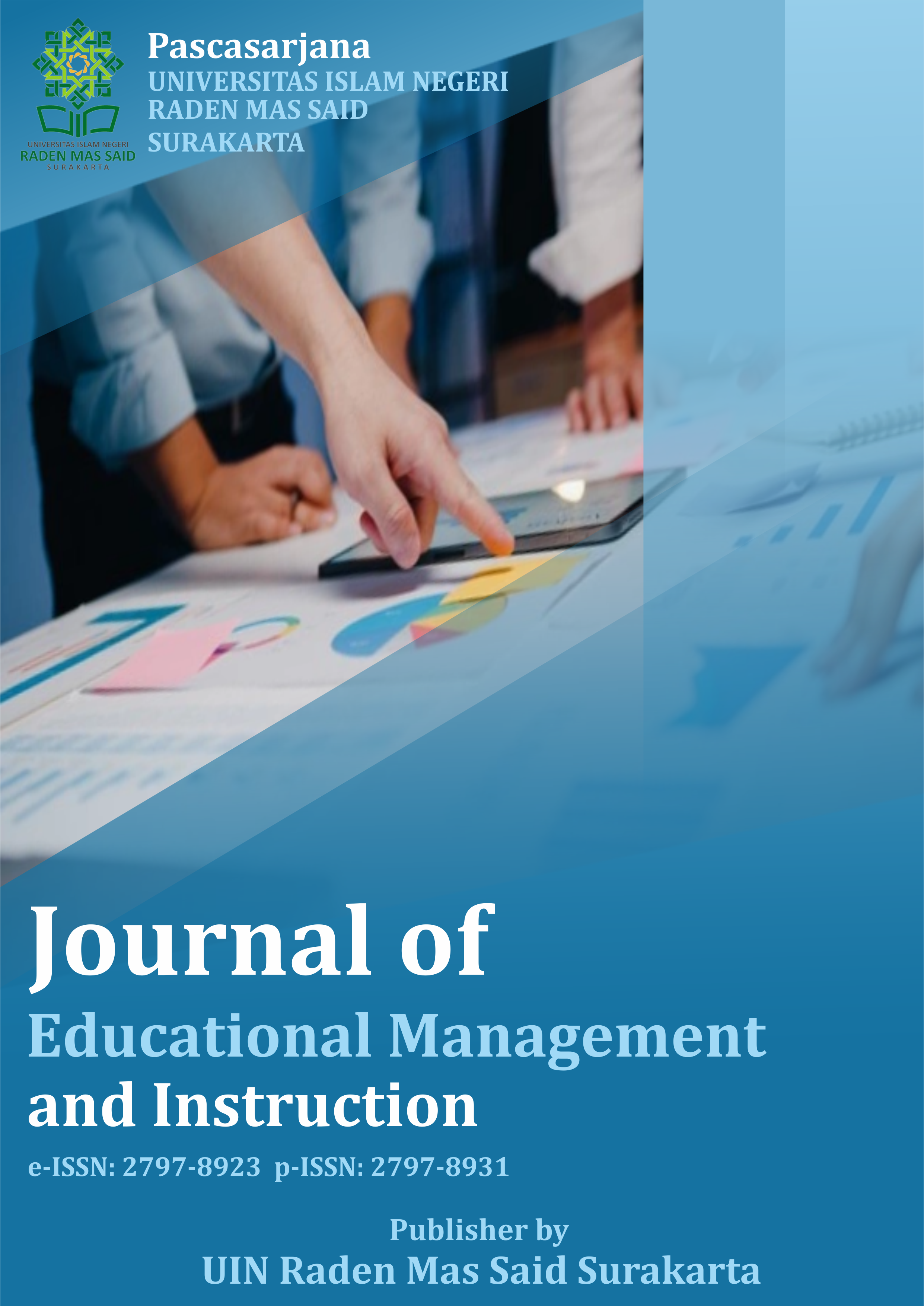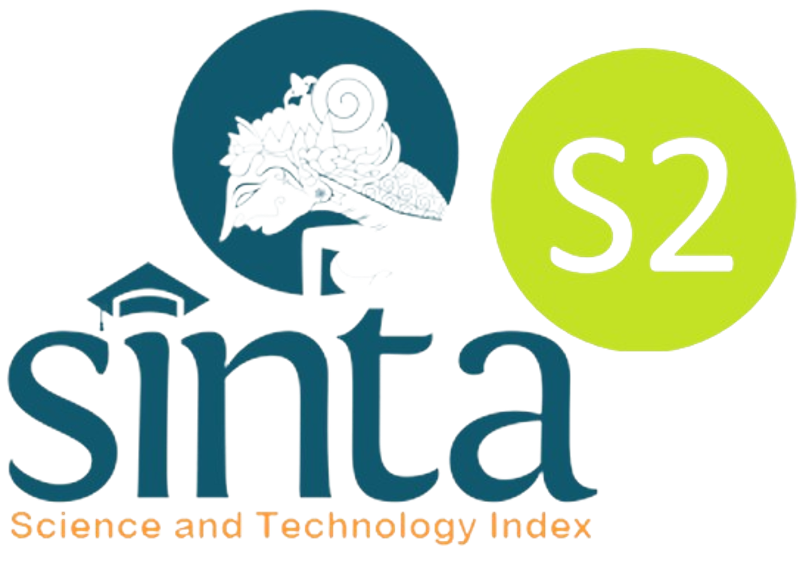Video-based flipped learning in higher education: Effects on students' learning motivation, attitudes, and engagement
DOI:
https://doi.org/10.22515/jemin.v1i2.4292Keywords:
Abstract
In the recent years, flipped learning has become popular and been widely utilized as teaching approach to activate students’ learning engagement, which is frequently used to reverse the conventional teaching. However, much more efforts are necessary to enrich the literature about its practices across different teaching and learning contexts. This study is at the cutting edge of examining the practice of flipped learning in higher education contexts; as well as exploring its effects on students’ learning motivation, attitudes, and engagement. Data were collected using a questionnaire from 35 undergraduate students enrolled in “Introduction of Educational Technology†course at a college of education, and the data were tested using 24-version IBM-SPSS linear regression. The results demonstrated that flipped learning strategy is a positive predictor for students’ learning motivation (p-value 0.001 < 0.05), attitudes (p-value 0.007 < 0.05), and engagement (p-value 0.003 < 0.05). The results contribute to offering valuable insights for college stakeholders to enhance the efficacy of teaching and learning process, particularly for higher education curriculum designers to adapt to the current teaching approach. Instructional implication and research suggestions are provided based on the results of the study.
Downloads
References
Bergmann, J., & Sams, A. (2012). Flip your classroom: Reach every student in every class every day. International society for technology in education.
Chang, R.-C., Chung, L.-Y., & Huang, Y.-M. (2016). Developing an interactive augmented reality system as a complement to plant education and comparing its effectiveness with video learning. Interactive Learning Environments, 24(6), 1245–1264. https://doi.org/10.1080/10494820.2014.982131
Chao, C., Chen, Y., & Chuang, K. (2015). Exploring students’ learning attitude and achievement in flipped learning supported computer aided design curriculum: A study in high school engineering education. Computer Applications in Engineering Education, 23(4), 514–526. https://doi.org/10.1002/cae.21622
Chen Hsieh, J. S., Wu, W.-C. V., & Marek, M. W. (2017). Using the flipped classroom to enhance EFL learning. Computer Assisted Language Learning, 30(1), 1–21. https://doi.org/10.1080/09588221.2015.1111910
Chen, Y., Wang, Y., & Chen, N.-S. (2014). Is FLIP enough? Or should we use the FLIPPED model instead? Computers & Education, 79(October), 16–27. https://doi.org/10.1016/j.compedu.2014.07.004
Chung, E. J., & Lee, B.-H. (2018). The effects of flipped learning on learning motivation and attitudes in a class of college physical therapy students. Journal of Problem-Based Learning, 5(1), 29–36.
Coley, K., Hantla, B., & Cobb, C. (2013). Best practices for beginning a flipped classroom in the humanities. NAPCE Annual Conference, Rosemont, IL.
Davies, R. S., Dean, D. L., & Ball, N. (2013). Flipping the classroom and instructional technology integration in a college-level information systems spreadsheet course. Educational Technology Research and Development, 61(4), 563–580. https://doi.org/10.1007/s11423-013-9305-6
Gilboy, M. B., Heinerichs, S., & Pazzaglia, G. (2015). Enhancing student engagement using the flipped classroom. Journal of Nutrition Education and Behavior, 47(1), 109–114. https://doi.org/10.1016/j.jneb.2014.08.008
Ginola, D., & Sidabalok, D. M. (2016). The Implementation of Flipped Classroom by Using Schoology in Speaking II Class of English Education Study Program of Teacher Training and Education Faculty of Bandar Lampung University. Proceding of International Conference on Education and Language (ICEL) (pp 199-207). Lampung Indonesia.
Haghighi, H., Jafarigohar, M., Khoshsima, H., & Vahdany, F. (2019). Impact of flipped classroom on EFL learners’ appropriate use of refusal: achievement, participation, perception. Computer Assisted Language Learning, 32(3), 261–293. https://doi.org/10.1080/09588221.2018.1504083
Heo, H. J., & Chun, B. A. (2018). Improving the higher order thinking skills using flipped learning: Focused on the in-class activities with problem posing and solving. Asia Life Sciences Suplement, 15(4), 2187–2200.
Hinojo Lucena, F. J., Lopez Belmonte, J., Fuentes Cabrera, A., Trujillo Torres, J. M., & Pozo Sanchez, S. (2020). Academic effects of the use of flipped learning in physical education. International Journal of Environmental Research and Public Health, 17(1), 276. https://doi.org/10.3390/ijerph17010276
Hung, H.-T. (2015). Flipping the classroom for English language learners to foster active learning. Computer Assisted Language Learning, 28(1), 81–96. https://doi.org/10.1080/09588221.2014.967701
Hwang, G.-J., Lai, C.-L., & Wang, S.-Y. (2015). Seamless flipped learning: a mobile technology-enhanced flipped classroom with effective learning strategies. Journal of Computers in Education, 2(4), 449–473. https://doi.org/10.1007/s40692-015-0043-0
Hwang, G. J., Yin, C., & Chu, H. C. (2019). The era of flipped learning: promoting active learning and higher order thinking with innovative flipped learning strategies and supporting systems. Interactive Learning Environments, 27(8), 991–994. https://doi.org/10.1080/10494820.2019.1667150
Jamaludin, R., & Osman, S. Z. M. (2014). The use of a flipped classroom to enhance engagement and promote active learning. Journal of Education and Practice, 5(2), 124–131.
Karaca, C., & Ocak, M. A. (2017). Effects of Flipped Learning on University Students’ Academic Achievement in Algorithms and Programming Education. International Online Journal of Educational Sciences, 9(2), 527-543.
Katchamat, P. (2018). The Effect of Flipped Classroom Instruction on Appropriacy of English Apology by Thai EFL Learners. International Journal of Pedagogy and Teacher Education, 2(Focus Issue July), 13–119. https://doi.org/10.20961/ijpte.v2i0.25142
Lai, C., & Wu, C. (2006). Using handhelds in a Jigsaw cooperative learning environment. Journal of Computer Assisted Learning, 22(4), 284–297. https://doi.org/10.1111/j.1365-2729.2006.00176.x
Lee, G., & Wallace, A. (2018). Flipped learning in the English as a foreign language classroom: Outcomes and perceptions. TESOL Quarterly, 52(1), 62–84. https://doi.org/10.1002/tesq.372
Lin, P.-C., & Chen, H.-M. (2016). The effects of flipped classroom on learning effectiveness: using learning satisfaction as the mediator. World Transactions on Engineering and Technology Education, 14(2), 231–244.
Lo, C. K., & Hew, K. F. (2020). A comparison of flipped learning with gamification, traditional learning, and online independent study: the effects on students’ mathematics achievement and cognitive engagement. Interactive Learning Environments, 28(4), 464–481. https://doi.org/10.1080/10494820.2018.1541910
Makruf, I., Choiriyah, S., & Nugroho, A. (2021). Flipped Learning and Communicative Competence: An Experimental Study of English Learners. International Journal of Education in Mathematics, Science and Technology, 9(4), 571–584. https://doi.org/10.46328/ijemst.1960
Mutiaraningrum, I., & Nugroho, A. (2020). Social construction of knowledge in synchronous text-based discussion during English language learning. Journal on English as a Foreign Language, 10(2), 315-336. https://doi.org/10.23971/jefl.v10i2.1934
Nugroho, A., Haghegh, M., & Triana, Y. (2021). Emergency Remote Teaching amidst Global Pandemic: Voices of Indonesian EFL Teachers. VELES Voices of English Language Education Society, 5(1), 66-80. https://doi.org/10.29408/veles%20journal.v5i1.3258
Pierce, R., Fox, J., & Dunn, B. J. (2012). Instructional design and assessment: Vodcasts and activelearning exercises in a “flipped classroom” model of a renal pharmacotherapy module. American Journal of Pharmaceutical Education, 76(10), 1–5.
Saulnier, B. (2015). The flipped classroom in systems analysis & design: Leveraging technology to increase student engagement. Information Systems Education Journal, 13(4), 33.
Singay, S. (2020). Flipped learning in the English as a second language classroom: Bhutanese students’ perceptions and attitudes of flipped learning approach in learning grammar. Indonesian Journal of Applied Linguistics, 9(3), 666–674.
Strayer, J. F. (2012). How learning in an inverted classroom influences cooperation, innovation and task orientation. Learning Environments Research, 15(2), 171–193.
Suprapti, S., & Nugroho, A. & Putra, H. R. P. (2021). Flipped Learning Instruction to Enhance University Students’ Higher Order Thinking Skills. Jurnal Kependidikan: Jurnal Hasil Penelitian Dan Kajian Kepustakaan Di Bidang Pendidikan, Pengajaran Dan Pembelajaran, 7(2), 261–269. https://doi.org/10.33394/jk.v7i2.3320
Wahyuningsih, E., & Baidi, B. (2021). Scrutinizing the potential use of Discord application as a digital platform amidst emergency remote learning. Journal of Educational Management and Instruction (JEMIN), 1(1), 9–18. https://doi.org/10.22515/jemin.v1i1.3448
Webb, M., & Doman, E. (2020). Impacts of flipped classrooms on learner attitudes towards technology-enhanced language learning. Computer Assisted Language Learning, 33(3), 240–274. https://doi.org/10.1080/09588221.2018.1557692
Wei, C.-W., Lin, Y.-C., & Lin, Y.-T. (2016). An interactive diagnosis approach for supporting clinical nursing courses. Interactive Learning Environments, 24(8), 1795–1811.
Yilmaz, R. (2017). Exploring the role of e-learning readiness on student satisfaction and motivation in flipped classroom. Computers in Human Behavior, 70, 251–260.
Young, T. P., Bailey, C. J., Guptill, M., Thorp, A. W., & Thomas, T. L. (2014). The flipped classroom: a modality for mixed asynchronous and synchronous learning in a residency program. Western Journal of Emergency Medicine, 15(7), 938-934. http://doi.org. 10.5811/westjem.2014.10.23515
Zhang, S., Wang, Z., Chang, R., Wang, H., Xu, C., Yu, X., Tsamlag, L., Dong, Y., Wang, H., & Cai, Y. (2020). COVID-19 containment: China provides important lessons for global response. Frontiers of Medicine, 1–5.
Downloads
Submitted
Accepted
Published
How to Cite
Issue
Section
License
Copyright (c) 2021 Mariam Haghegh, Arif Nugroho

This work is licensed under a Creative Commons Attribution-NonCommercial 4.0 International License.
Copyright
Copyright aims to protect the specific way the article has been written to describe an experiment and the results. Journal of Educational Management and Instruction is committed to its authors to protect and defend their work and their reputation and takes allegations of infringement, plagiarism, ethical disputes, and fraud very seriously. Automotive Experiences is published under the terms of the Attribution-NonCommercial 4.0 International (CC BY-NC 4.0). Authors retain copyright and grant the journal right of first publication (online and print) with the work simultaneously. We use the restrictive license (non-commercial) as follows:
BY (attribution): Users are allowed to share, distribute and redistribute the published article in any medium or format, with an identification of the authors and its initial publication in this journal. Authors are encouraged to post and distribute their articles immediately after publication (e.g., institutional or public repositories, personal websites). Authors are allowed to enter into additional contractual arrangements for the non-exclusive distribution of the published and an acknowledgment of its initial publication in this journal.
NC (non-commercial): Users are not allowed to use the article commercially without the permission of the authors. Authors agree explicitly that the published article is indexed worldwide in databases, repositories and indexation services, even if these services operate on a commercial basis. Authors grant Journal of Educational Management and Instruction explicit the right to include the published articles in databases, repositories and indexation services.
License
License to Publish
The non-commercial use of the article will be governed by the Attribution-NonCommercial 4.0 International (CC BY-NC 4.0). The author hereby grants Journal of Educational Management and Instruction an exclusive publishing and distribution license in the manuscript include tables, illustrations or other material submitted for publication as part of the manuscript (the “Articleâ€) in print, electronic and all other media (whether now known or later developed), in any form, in all languages, throughout the world, for the full term of copyright, and the right to license others to do the same, effective when the article is accepted for publication. This license includes the right to enforce the rights granted hereunder against third parties.
Author's Warranties
The author warrants that the article is original, written by stated author/s, has not been published before, contains no unlawful statements, does not infringe the rights of others, is subject to copyright that is vested exclusively in the author and free of any third party rights, and that any necessary written permissions to quote from other sources have been obtained by the author(s).
User Rights
Under the Creative Commons Attribution-Non Commercial 4.0 International (CC BY-NC 4.0) license, the author(s) and users are free to share (copy and redistribute the material in any medium or format) and adapt (remix, transform, and build upon the material). Users must give appropriate credit, provide a link to the license, and indicate if changes were made.
Rights of Authors
Authors retain the following rights:
- Copyright, and other proprietary rights relating to the article, such as patent rights,
- The right to use the substance of the article in future own works, including lectures and books,
- The right to reproduce the article for own purposes, provided the copies are not offered for sale, and
- The right to self-archive the article.
Co-authorship
If the article was prepared jointly with other authors, the signatory of this form warrants that he/she has been authorized by all co-authors to sign this agreement on their behalf, and agrees to inform his/her co-authors of the terms of this agreement.














